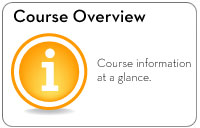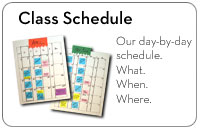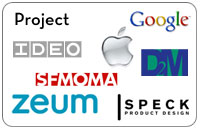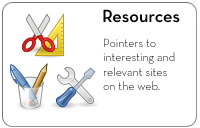The IDEO transformation practice
works with people from a wide range of industrial companies
to foster new practices of innovation within the company.
As with all kinds of personal, social, and organizational
transformation, the hard part is making it stick. It is easy
to present new ideas and get people excited about them, but
it is much harder to make changes that stick after the "transformers"
finish their consultation and go away.
One team worked with the IDEO partners and with the Design
Services Team at SAP to develop ways to reinforce and maintain
the innovation practices that were being taught. They studied
theories and techniques of behavior change in personal and
social domains, and experimented with habit change techniques
in simple settings as a way of getting insights into how they
work. They developed tools to integrate habit change thinking
into the transformation workshop by getting participants to
reflect on their own habit-change experience, and applying
a framework incorporating physical reminders, social context,
and reward structures.

Prototyping living displays
Scott Doorley, Bjoern Hartmann, Sohyeong Kim, Parul Vora
Museum experiences, like software interfaces, present a challenge
to the designer in that they take a lot of work to build,
but it is hard to know what will really work until users try
it out. There is a tremendous body of research and tools for
software prototyping, and this team extended the idea of low
fidelity rapid prototyping into the domain of full-scale interactive
displays, like those at the Tech
Museum of Innovation, where they worked with a group of
display designers.
The team created a software-hardware tool that combines automatic
capture of sketching on large whiteboards, tools for animating
sketches and connecting those animations to physical control
devices, and a "wizard-of-Oz" technique for running
those animations to create an interactive full-size version
of the display. With this tool, an exhibit designer can create
interactive experiences in less than a day, making it possible
to get many rounds of feedback before committing to a costly
build of the real physical display. The system is operative
and a short
paper and video
have been submitted to the conference on User Interface Software
and Technology.

Turning brainstorms into a reviewable resource
Jay Akkad, Dean Eckles, Paul Lin, Kris Woyzbun
In most design settings, initial ideation is accompanied
by the creation of brainstorming artifacts, such as sketches.
As the process goes forward, these become a resource for reviewing
what has been done, revisiting ideas, recalling conversations
about issues, and providing a "team memory" of the
project. Often, even if these artifacts are digital, the informal
sequential way in which they are produced leads to their being
in undifferentiated heaps, hard to find and therefore left
sitting unused. On the other hand, attempts to get designers
to classify and carefully file their brainstorms generally
fail, because they create an extra burden of up-front work.
This team, based on their studies and discussions with designers
at Synaptics, saw that
current trends in the organization of photos and images on
public sites such as Flickr could be the key to making brainstorm
sketches a living part of a design practice, going beyond
individual projects and providing a basic resource for design.
They created an interface that makes use of informal tagging
techniques that have been made popular in Web 2.0 applications
such as Flickr and de.licio.us, lowering the overhead and
distributing the work of saving, classifying and retrieving
past work, creating new communication practices for designers.

Bringing personas to life














